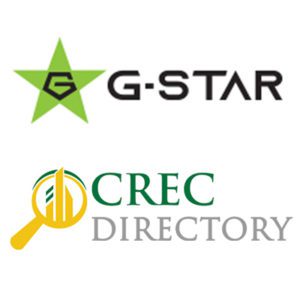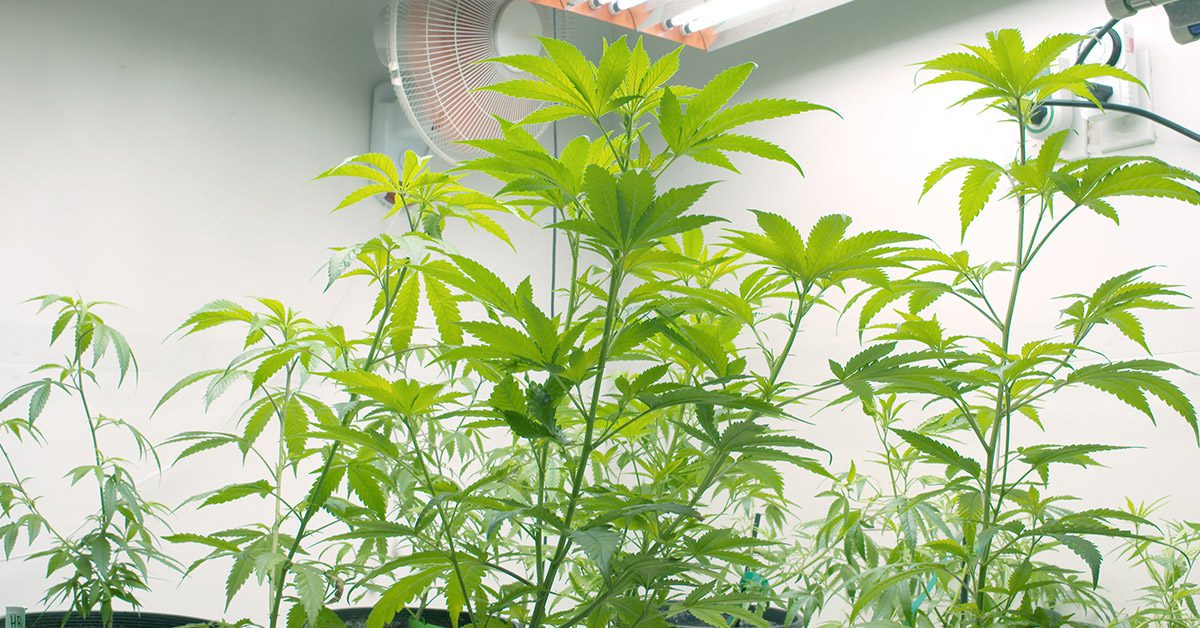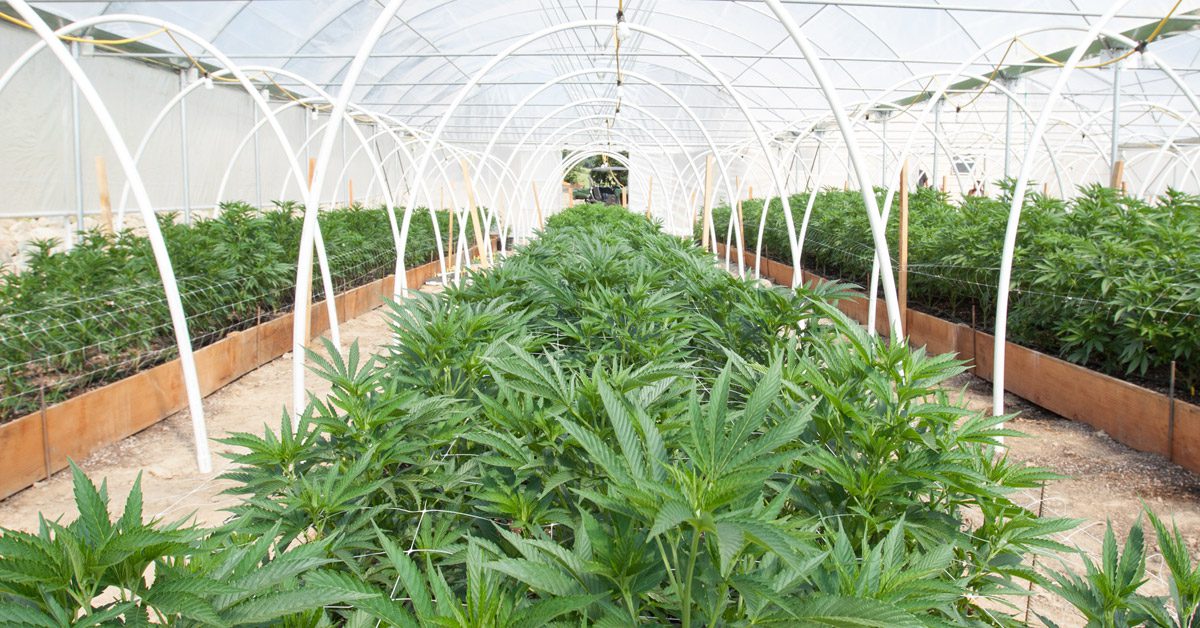This article will inform you of our best tips to setup a commercial cannabis greenhouse and explain the hidden elements that are necessary for long-term success and profitability.
Setting up a grow operation is an expensive, competitive, and risky scenario. Growing cannabis successfully is complicated and growing at a large scale for your business, has even more risk.
Whether selecting a greenhouse, warehouse, or outdoor grow, this webinar will teach you from the experience of our panelists, to consider the necessary requirements for commercial operations.
 There are endless elements to creating a greenhouse, and in our interviews with GStar, CREC Directory Partner; we have learned a lot more about the technical requirements and improvements.
There are endless elements to creating a greenhouse, and in our interviews with GStar, CREC Directory Partner; we have learned a lot more about the technical requirements and improvements.
Lighting, power, heating/cooling, water, control panels, light deprivation, real estate, warranty plans, benefits of LED lighting or HPS lighting, indoor greenhouses, transparent roof warehouses, matching your environment, and properly planning out your operations are specialties of our CREC Directory Partner.
Watch the webinar below and read our top 8 tips for greenhouse commercial growing success!
About the Commercial Cannabis Cultivation Panelists
Randy “Crock” Jones – Cannabis entrepreneur in Washington and Oregon, as well as a real estate investor, and consultant. Randy has generated over $30 Million in tax revenue from the cannabis industry and has plans to continue to expand.
Omar Sturm – CEO at Perfect Harvest. Omar is an experienced cannabis executive and founder of a leading cannabis brand in the Pacific Northwest.
Miklos Campuzano – Managing Director / Commercial Agent at Cannabis Real Estate Consultants. Miklos manages CREC brokerage and supporting other divisions to provide technology, networking, legal, and consulting services to the cannabis industry worldwide.
Jeff Cohen – Featured presenter with GStar Global, trusted CREC Directory partner for lighting, greenhouses, packaging, and other equipment.
Moderated by Roger Tower, Chief Marketing Officer, Cannabis Real Estate Consultants
Cannabis Greenhouses – CREC Directory Webinar Recording
Contact GStar with questions about equipment and information for improving ROI in cannabis cultivation.
Read Below for Your Guide to Cannabis Growing in a Commercial Greenhouse
Based on the webinar we conducted with GStar, we’ve compiled our best advice for helping you be successful in growing for commercial purposes. Before our 8 tips for creating better ROI, let’s first cover a few common questions to build a foundation on questions about greenhouse cultivation.
Q: How to Build a Greenhouse for Cannabis Production: Indoors or Outdoors?
While there are benefits to growing outside as well, growers can maintain a higher level of control over humidity, available light, and pests in an indoor environment.
Maintaining proper light levels and staying as energy-efficient as possible are top priorities for commercial cannabis production operations, and having a well set-up indoor greenhouse can ensure you stay on track. Keep in mind some greenhouses can have 10,000 square feet of space and some are much bigger with over 500 lights.
Q: What Does it Take to Start Building out a Commercial Cannabis Greenhouse?
Omar Sturm explains that in the original setup of the business prior to his improvements, the staff was not organized and there was no clear schedule or plan. The company was initially not budgeting or spending properly, and the process was poor, which then led to a poor product.
When Omar took over operations and began looking at costs month to month and adjusted their spending, he switched to LED lighting to improve efficiency and began using EST Tech Lights & Greenhouse Equipment. It is important to plan how to increase the product yield, get more equipment, and hire better staff and management when starting out. At the time he was doing so, the market was saturated, so it was incredible to be able to have made these improvements into a profitable business.
Q: What are the Differences Between Growing in a Greenhouse vs a Warehouse?
Choosing a facility to successfully cultivate cannabis can be tough but there are some obvious advantages of using a greenhouse environment. Greenhouses allow natural sunlight which plants crave, while a warehouse may just have a transparent roof, only allowing light from above and at certain parts of the day.
Warehouse grows are often in industrial areas whereas greenhouses are generally more in rural areas, and of course, this depends on where you are located. The cost of a building in an industrial area can also be much more expensive.
Greenhouse growing will be more efficient and easier in the long run.
There are different types of greenhouses to consider depending on what you are trying to produce:
- Non-light deprivation greenhouses
- Light deprivation greenhouses: These greenhouses are not reliant on mother nature, creating an indoor environment that is fully controlled.
- Indoor greenhouses: These have less of a footprint and no cross light
- Outdoor greenhouses
Depending on the type of greenhouse you are growing in, you will be able to yield a different amount of crops.
With an outdoor greenhouse, you may have one to two crops in the year.
With a light deprivation greenhouse, it can flower at any time and you can have up to 5-6 crops, due to the sun’s natural light vs supplement light as needed. Setting a timer to get the maximum sun penetration will help yield as much as possible in a year.
Contact CREC Compliance for support finding land approved for growing and securing licensing.

8 Tips for Managing Commercial Cannabis Grow Operations
1. The Importance of Light
Controlling the light your cannabis crop receives impacts quality (potency), harvest size and the number of harvests per year you will have. Depending on your goals, light selection for your indoor/greenhouse may be your most important decision.
Key decisions you’ll need to make are the lighting type, budget, power usage, and how often you need to replace your lights. Here is what we learned from the panelists.
- LED lighting is more energy efficient than HPS (high pressure sodium) lighting
- LED lighting has power savings and heat reduction with less humidity
- LED is the trend of the market and has grown steadily to replace HPS lights
- Lighting can be used in greenhouse and other indoor environments
Indoor growing environments are having a big impact on energy consumption. This has caused momentum for growers to move from HPS lighting to LED lighting. In addition to significant savings on power, it is likely that you may qualify for rebates on your LED lighting purchase. GStar LED lights are a direct replacement for the old HPS style lights.
Make sure to get a maintenance warranty from GStar and leverage your GStar team to help you obtain rebates. This will be your best option to purchase your lights and keep them in top shape.
Contact GStar about lighting setup, they are THE lighting specialists for all grow operations.
2. Greenhouse Structure Size & Material
When thinking of how large of a greenhouse you may need, there are many factors to consider and you should plan for expansion from the very start.
Light deprivation greenhouses improve control over flowering and can increase the number of harvests your grow experiences per year.
GStar offers multiple sizes, their most popular is a 30 x 105 feet (3150 sq. ft.) and there are 2 different models you’ll want to consider.
Double Layer Film – The Double Layer Film model has two heavy plastic layers that insulate the greenhouse due to inflated air compartments.
Polycarbonate Panel – The Polycarbonate Panel model has an 8mm two layer Polycarbonate material for protection and insulation from the outside. This model is also 6 feet taller than the Double Layer Film module.
Additional consideration should include grow tables, aisles, work areas and how you may choose to manage multiple greenhouses on your property.
3. Power Usage
The cost of electricity is the number one expense facing producers and often matches or exceeds total lease costs per month during production.
According to Data Analysis firm New Frontier, cannabis is the most energy-intensive agricultural product in the US, primarily due to extremely high energy costs demanded by indoor grow operations.
Artificial lighting, dehumidification, ventilation, air conditioning, and irrigation control systems all require immense amounts of electricity.
Did you know an estimated 4% of Denver’s annual energy usage went toward cannabis production facilities in 2020?
If you haven’t already, it’s time to get a power upgrade. When your greenhouse has ample power, it won’t be straining the power grid and the last thing you want is to blow a transformer or start a fire.
Using solar panels, microturbines, water recycling, regeneration, and existing facilities take less off the grid. If you are buying off the grid, be prepared to upgrade the power, and learn about the water and power details before getting the property.
4. Water Quality & Presence
One of the best ways to save on cost and help your plants, is to recycle water and to collect rainwater.
In some situations, you may have to dig a well, but wells and city water can be expensive, and you must consider water treatment systems as part of this.
Due diligence to review water quality, which minerals are present, and the presence of heavy metals or microbial contaminants will ensure you are getting the cleanest water to your crops. You want to avoid nutrient lock or other deficiencies as well when watering.
Some high-end growers are switching to permeable concrete to facilitate natural water recycling, but it’s also not a bad idea to use wooden pallets or grated plastic platforms as the floor of your grow tent, to help with runoff or collecting water for recycling.
5. Temperature and Control Panels
Temperature, humidity, and ventilation are important parts to your greenhouse and ensure plants are growing without burning, dying, or getting moldy.
There should be at least 8 fans and you should be able to control the heating, cooling, and airflow throughout your greenhouse. Monitor your air intake and outtake, and use an absorption chiller, which chills water with a sudden change of pressure. When using LEDs, they use less wattage, which will help with temperature and power control. If you have a wet wall, it brings in moist air and you can control that more when using a dehumidifier.
A control panel will control the light deprivation system and airflow / temperature. This should be hooked up to a thermostat for easy use.
6. Strong Genetics
Make sure you have strong genetics that won’t produce seeds and will be resilient enough when starting your greenhouse.
Even with good lighting, you will need those strong genetics to have a good harvest. Whenever possible, you should buy from trusted retailers or breed your own to be in control of exactly what you are planting and get the best return on investment possible.
7. Tailor Your Setup To Your Environment
Depending on your geographical location, your greenhouse setup can be totally different.
For example, if you are in Southern California vs. Mendocino, you will have different humidity and temperature to control. One could set up a Mendocino style greenhouse and overcome environmental factors, but it may be more complicated depending on your location.
Different strains react in different ways, depending on their environment and prefer steady conditions. It is easier and less costly to work with the environment, than to create a completely different environment for your greenhouse.
8. Hiring The Right People
Unfortunately, a lot of mistakes come from the wrong staff. Some individuals may think they know better in some instances and make poor decisions.
A lot of people say they know what they are doing but don’t know, or haven’t learned the specifics of the greenhouse they are currently working in. You can set up the best greenhouse, but if you don’t hire appropriately then you will risk it all.
While you will come across “master growers”, some may be growing in a commercial setting or some just growing in their basement. Either way, it is easier to train someone with good work ethics vs. someone who has vast knowledge, but poor ethics. Staffing can be huge and the jobs in a greenhouse are very labor intensive and can have a lot of turnover.

Commercial Cannabis Grow Operation Set Up Is Easier With The Right Knowledge
Complicated processes, need experts to support. Let’s chat and get your business operating smoothly!
When building a commercial cannabis greenhouse, you need to have a monthly maintenance plan, a Standard Operating Procedure (SOP) for everything, so there are no hassles when an issue arises, and a way to continuously control your costs. If you’re looking to get the highest ROI, plan to use LED lighting and light deprivation techniques to make a quality product while saving money.
GStar offers an all inclusive maintenance service to provide rapid and quality after-purchase service and replacement. When you purchase any products, they assign a greenhouse specialist to you for quick communication and problem solving. We highly recommend you contact them for input and support on your planned or current operations.
Free Consultation with GStar Global
Use this form to schedule a free consultation and ask your questions about lights, greenhouse structures, and more to improve your commercial grow operations.





